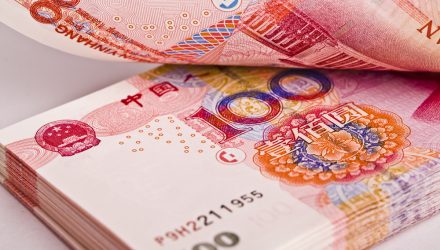The news coming out of China could mean that its currency could be under pressure despite its recent move to reopen its economy following the coronavirus pandemic. As global markets around the world continue to struggle with the pandemic, the U.S. dollar could continue to serve as the perfunctory safe haven.
“China set a reference rate for the yuan at its weakest point in 12 years, a signal that Beijing sees the benefits of a weaker currency as it grapples with an economic slowdown and rising tensions with Washington,” a Wall Street Journal report noted. “On Tuesday, the People’s Bank of China set a daily midpoint for the yuan at 7.1293 per dollar, the lowest level since February 2008. The central bank lets the onshore yuan trade in a band around this fix, which it sets based partly on previous market prices. The currency also trades in less tightly controlled offshore markets, in Hong Kong and elsewhere.”
“The yuan weakened through much of 2018 and 2019 as U.S.-China trade tensions built. It broke below 7 yuan per dollar in August, prompting President Trump to accuse Beijing of manipulating its currency,” the WSJ report added. “But then it rallied into January 2020, when the world’s two largest economies signed a partial trade deal.”
An interesting all-world play that hedges against currency fluctuations against the U.S. dollar is the Xtrackers MSCI All World ex U.S. Hedged Equity ETF (DBAW). DBAW seeks investment results that correspond generally to the performance, of the MSCI ACWI ex USA US Dollar Hedged Index.
DBAW uses a “passive” or indexing investment approach, which is designed to track the performance of equity securities in developed and emerging stock markets while mitigating exposure to fluctuations between the value of the USD and the currencies of the countries included in the underlying index. It will invest at least 80% of its total assets in component securities of the underlying index.
Another option is the Xtrackers MSCI EAFE Hedged Equity ETF (DBEF), which seeks investment results that correspond generally to the performance, before fees and expenses, of the MSCI EAFE US Dollar Hedged Index. The fund seeks investment results that correspond generally to the performance of the underlying index, which is designed to track developed market performance while mitigating exposure to fluctuations between the value of the U.S. dollar and the currencies of the countries included in the underlying index. It will invest at least 80% of its total assets in component securities of the underlying index.
For more market trends, visit ETF Trends.
